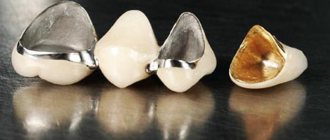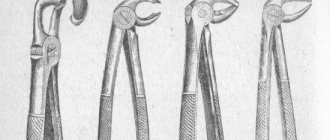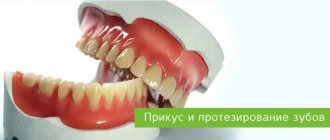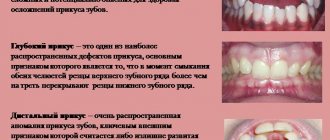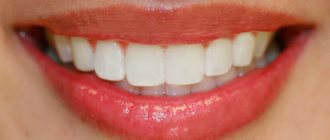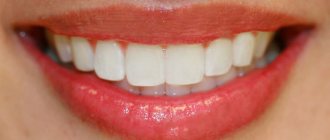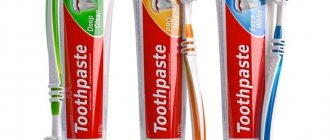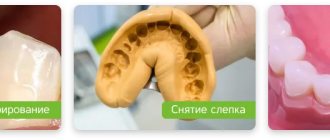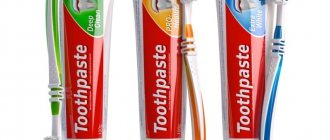Types and shapes of forceps for tooth extraction
The main surgical instruments used in dentistry are forceps. Their design differs depending on which jaw they will be used on: lower or upper.
Instruments used for the upper dentition are characterized by the fact that the axis of their cheeks and handles coincides or they are parallel. For the lower jaw, the axis of the cheeks and the axis of the handles are located either at a right angle, or this angle approaches 90 ̊.
Tooth extraction forceps also differ in other ways:
- If dental units with the crown part preserved are removed, then the design features are characterized by non-converging cheeks of the working area.
- If the roots remaining in the hole are removed, then use pliers with converging cheeks.
In order for surgery to proceed without complications, it is necessary to choose the right instrument. If the operation will be carried out in the frontal part of the upper jaw (incisors, canines), the shape of the instrument is chosen to be straight, i.e. the axes of the handles and cheeks coincide.
Forceps for removing teeth of the upper jaw of the lateral section (premolars, molars) have working parts of different sizes. To remove molars, the cheeks of the instrument are larger than for premolars. The last molars are removed using forceps with an S-shaped bend, their cheeks are located at an obtuse angle in relation to the jaws. These pliers are called bayonet pliers.
The instrumentation for removing teeth of the upper jaw has one rounded cheek and the other with a protrusion (spike). This spike is located either on the left or right side. Based on this feature, they understand which side of the dentition the instrument is intended for.
If the clinical picture is characterized by the destruction of dental tissue above the gum level, then elements with bayonet-shaped, elongated, narrowed cheeks are used to extract the root.
Dental forceps for removing teeth of the lower jaw are beak-shaped, their axes are located at right angles. Depending on which side of the dentition the pain occurs on, instruments with the appropriate cheek size are selected. The root removal tool must have converging jaws. If the dental crown is completely preserved, then the working surfaces do not converge.
In a situation where the patient has difficulty opening his mouth, removing molars from the socket becomes problematic. For the operation, horizontal nippers curved along a plane are used. They have a slightly different structure from beak-shaped forceps. Their handles and lock are located in a horizontal plane, and the cheeks bend at an angle close to 90 ̊ and are located in a vertical plane. To carry out the procedure with such instruments, movements are carried out in a horizontal plane.
Forceps
When removing teeth with forceps, the lever method is used. Such instruments consist of cheeks, a lock and handles:
- The cheeks are the part that secures the crown of the tooth being removed.
- Handles (handles) are the part by which the doctor holds the forceps in his hand.
- The lock is the junction of the handles and cheeks.
All forceps differ in their design - it depends on the anatomy and location of the tooth being removed in the oral cavity.
To remove lower teeth
- Beak forceps - used to remove teeth with a retained crown and, in some cases, roots in the lower jaw. Their feature is the perpendicular arrangement of the cheeks in relation to the handle. Beak-shaped forceps can have non-converging or converging cheeks.
- For the lower eighth teeth – used when the patient’s mouth opening is limited or to remove lower wisdom teeth. They have cheeks curved in a horizontal plane.
To remove upper teeth
- Bayonet-shaped (bayonet) - also called universal, since they can remove almost any tooth or root of the upper jaw. Depending on the width of the cheeks, they can be narrow, medium or wide. By design, bayonet-shaped pliers have handles and cheeks parallel to the axis.
- Direct – used to remove permanent and primary teeth of the anterior group. The handles and the working part are located on the same line.
- S-shaped forceps - for removing chewing teeth of the upper jaw. They have an S-shaped bend and their cheeks do not close together. There are S-shaped forceps for molars and for premolars. For molars, in turn, there are right or left (designed to remove the right or left upper molar, respectively). One cheek of such forceps is rounded at the end, the other ends with a spike, which during removal must be placed between the buccal roots of the sixth and seventh teeth.
- For the upper eighth teeth - special forceps designed to remove the upper wisdom teeth. The longitudinal axis of the handles and the axis of the cheeks are parallel, there is a transition part. Both cheeks are wide, rounded at the end, the inner surface has indentations. When closed, such forceps do not converge; they are conveniently inserted deep into the oral cavity, while the lower teeth do not interfere with the extraction procedure.
Auxiliary Tools
In severe clinical cases, when dental units are impacted or severely damaged, it is impossible to remove them using forceps. To do this, use auxiliary tools: elevator, chisel, luxator. Elevators are used in dentistry:
- W. James,
- Kuplanda,
- Cryer.
Recently, doctors have begun to replace elevators, and in some cases, dental forceps, with luxators. This choice is explained by the easy penetration of the instrument into the periodontal zone and low trauma to the alveolar bone. At the same time, the risk of postoperative complications is minimal.
Using forceps to remove teeth
Which forceps are chosen depends on:
- from the jaw on which the manipulation will be performed,
- groups of teeth (lateral, anterior),
- integrity of dental tissues,
- mouth opening width.
The type of forceps used in these cases is noted above.
The main purpose of their use is to extract the dental unit (root) from the socket. This can be done in 2 ways:
- Luxation - rocking. The method is indicated for molars and premolars with multiple roots.
- Rotation is rotation around an axis. Used to extract incisors and canines.
Operating technique using forceps:
- Local anesthesia.
- Cheek placement.
- Their advancement into the subgingival area.
- Fixation.
- Rotation or luxation.
- Extracting a dental unit from the socket.
All stages must follow strictly one after another. The success of the surgical intervention and the absence of complications depend on this.
Tool holding methods
The operation is performed with the right hand. The dentist holds the instrument so that it is comfortable. There are 2 ways:
- Hold the handles of the tool with your right hand, using the 1st, 2nd and 3rd fingers. The 4th and 5th fingers of the hand are located between the branches. If the need arises, these fingers are included in the extension of the handles. As soon as the forceps close, the 4th and 5th fingers are removed from the space between the handles of the instrument.
- One handle is held with the thumb of the right hand, and the other with 4 and 5. This method is more suitable for the upper dentition. The tips of the handles of surgical instruments rest against the palm. The handles move apart, which leads to the straightening of the 3rd finger. The closure of the handles is carried out by bending the 4th and 5th fingers. After applying the cheeks to the causative tooth, the index finger is withdrawn, and the jaws are compressed with the rest of the palm.
Removing teeth using an elevator
An elevator is usually used when the coronal part is severely damaged. To do this, take the handle of the tool in the palm of your right hand, place your index finger on the working part of the elevator, 1 cm away from the cheek. The cheek is deepened into the gap between the tooth being removed and the adjacent tooth in order to disrupt the ligamentous apparatus that holds the root in the socket, and a strong dislocation movement is performed.
After this, the cause of the pain is removed from the socket, sometimes requiring forceps. During operation, the cheek of the elevator rests against a nearby tooth. To prevent dislocation of this unit, it is necessary to firmly fix it in the socket with two fingers.
FORGERS AND ELEVATORS FOR TEETH EXTRACTION
Forceps. When removing teeth, the lever principle is used. In the forceps for removing teeth and roots, there are cheeks, handles and a lock (Fig. 26). Some pliers have a transition part between the cheeks and the lock. The cheeks are designed to grip the crown or root of a tooth. The handles are the part of the forceps by which they are held and to which force is applied during surgery. The lock is located between the cheeks and handles and serves to movably connect them. To better hold a tooth or root, the cheeks have a groove on the inside with a fine longitudinal groove. The outer surface of the handles is corrugated over a considerable extent, while the inner surface is smooth.
The design and shape of the forceps are not the same. Their design depends on the anatomical structure of the tooth and its place in the dentition.
The following types of forceps are distinguished:
1. Forceps for removing teeth and roots of the upper (Fig. 27, 28) and lower jaws (Fig. 29). In forceps for removing teeth of the upper jaw, the longitudinal axis of the cheeks and the axis of the handles coincide, or are parallel.
flat, or form an obtuse angle approaching two right angles (Fig. 30, a-d). For forceps for removing teeth of the lower jaw, the cheeks and handles are located at a right angle or at an angle approaching a right angle (Fig. 30, e).
2. Forceps for removing teeth with a retained crown (coronal) and for removing roots (root). The cheeks of the forceps for removing teeth with a crown do not converge when closed (see Fig. 27, 29, a-d), but for removing roots they do converge (see Fig. 28, 29. e).
3. Forceps for removing individual groups of teeth in the upper and lower jaw. They differ in the width and structural features of the cheeks, their location in relation to the handles, and the shape of the handles (see Fig. 27, 28, 29).
4. Forceps for removing the first and second large molars of the upper jaw on the right and left. The left and right cheeks of these forceps are arranged differently (see Fig. 27, c, d).
5. Forceps for removing teeth of the lower jaw with limited mouth opening. They have a bend in the cheeks in the horizontal plane (see Fig. 29, d).
To successfully perform the operation, you should use forceps, the design of which corresponds to the anatomical features of the tooth being removed.
Removal of the central incisor, lateral incisor and canine of the upper jaw is carried out using forceps that have a straight shape - straight forceps (see Fig. 27, a). The longitudinal axes of the cheeks and arms are in the same plane and coincide. Both cheeks are of the same shape, have a depression (groove) on the inside, and the ends are rounded. The tongs may have cheeks of greater or lesser width.
Removal of small molars of the upper jaw is carried out using forceps having an S-shaped bend (see Fig. 27.6). Their cheeks are located at an obtuse angle to the handles (see Fig. 30, b). This shape of the forceps allows you to correctly apply them to the tooth and, when removing it, avoid obstacles from the lower jaw. Their cheeks are designed in the same way as straight forceps.
Removal of large molars of the upper jaw is performed with forceps that have an S-shaped bend and are similar in shape to forceps for removing small molars (see Fig. 27, c, d). However, their cheeks are structured differently. They are shorter and wider, the distance between them when closed is greater. Both cheeks with inner
the sides have indentations. One cheek has a semicircular or flat end, the other ends with a protrusion (spike), from which a small ridge extends along the middle of the inner surface. When a tooth is removed, the spike enters the groove between the buccal roots. The cheek with a flat end covers the neck of the tooth from the palatal side. In some tongs the cheek with the spike is on the right side, in others - on the left. Depending on this, there are forceps for removing teeth on the right or left side. This arrangement of the cheeks provides a tight grip on the tooth and facilitates its dislocation.
The third large molar of the upper jaw is removed using special forceps (see Fig. 27, e). Between the cheeks
A
they have a transition part with a lock. The longitudinal axis of the cheeks and the axis of the arms are parallel. Both cheeks are the same: wide, with a thin end rounded at the edges. They have indentations on the inside; when the tongs are closed, the cheeks do not meet. The design of the forceps makes it possible to insert them deep into the oral cavity, while the lower jaw does not interfere with the operation.
The roots of the incisors, canines and premolars of the upper jaw are removed with the same forceps as the teeth, only with thinner and narrower cheeks that converge when closed (see Fig. 28, a, b). To remove the roots of large molars, bayonet-shaped teeth are used.
tongs (see Fig. 28 c, d). They have a transitional part, from which long converging cheeks extend with a thin semicircular end and a groove along the entire inner surface. The longitudinal axis of the cheeks and the axis of the handles are parallel (see Fig. 30, d). Depending on the width of the cheeks, bayonet-shaped (bayonet) pliers are distinguished with narrow, medium and wide cheeks. These forceps can be used to remove the roots of incisors, canines and small molars, i.e. the roots of all teeth in the upper jaw and teeth with dilapidated crowns.
Removal of teeth and roots of the lower jaw is carried out using forceps curved along the edge and having a beak-like shape (see Fig. 29). The axis of the cheeks and the axis of the handles form a straight angle or close to it (see Fig. 30, e). All components of the tongs are located in a vertical plane, the handles are one above the other. Depending on the shape of the crown of the tooth being removed and the number of its roots, the cheeks of the forceps have a different structure.
To remove the incisors of the lower jaw, the cheeks of the forceps are narrow with grooves on the inside, their ends are rounded, and they do not converge when closed (see Fig. 29, a). The canine and small molars are removed with the same forceps, but with wider cheeks (see Fig. 27, b).
Forceps for removing large molars have wide cheeks that do not converge when closed (see Fig. 29, c). Each of them ends with a triangular protrusion (spike). On the inside, both cheeks have indentations. When applied to a tooth, the projections fit into the groove between the anterior and posterior roots, ensuring good fixation of the forceps on the tooth.
With limited mouth opening, large molars are removed with horizontal forceps curved along a plane (see Fig. 29, d). They are structured differently than the beak-shaped ones. Their handles and lock are located in a horizontal plane, the cheeks are curved at an angle approaching a straight line and are located in a vertical plane. The working part of the cheeks is the same as that of beak-shaped forceps for removing large molars curved along the edge. Due to the bending of the cheeks and the horizontal position of the handles, they have a small height. Removing teeth with such forceps, unlike beak-shaped ones, is done with movements in the horizontal plane, which can be done if the mouth is poorly opened.
The roots of all teeth in the lower jaw are removed with forceps of the same shape as the incisors, canines and small molars, only with converging cheeks (see Fig. 29, e).
Ways to hold forceps. During tooth extraction, the forceps are held with the right hand. The fingers are positioned in such a way that you can freely bring together and spread the handles with the same hand and move the cheeks of the forceps deeper under the gum.
There are two most convenient ways to hold the tongs. According to the first method, fingers II and III cover the handles of the tongs from the outside and press the tongs against the palm with them IV and V fingers are inserted
on the inside of the handles; The first finger is placed between the handles and the lock from the outside (see Fig. 31.1, a).
The cheeks of the forceps are spread apart by straightening fingers IV and V, and brought closer by bending fingers II and III. When fixing the forceps on teeth IV and V, the fingers are brought out from the inside of the handles and cover the forceps from the outside (see Fig. 31.1, b).
The second method is used only when removing teeth of the upper jaw. The doctor turns the hand with the back surface towards him. The second and third fingers are inserted between the handles. One handle is covered from the outside by finger I, the other by finger IV and V (Fig. 31, II, a). Spread the cheeks of the forceps, moving the third finger outward, bring them closer - bending
IV and V fingers. When moving the cheeks of the forceps under the gum, the end of the handles rests on the palm. After this, the third finger is removed from the space between the handles and placed outside next to the fourth and fifth fingers. Squeeze the handles of the forceps with finger I on one side, III, IV and
V - on the other (Fig. 31, II, b).
Elevators. When removing teeth with an elevator, just like with forceps, the principle of leverage is used. The elevator consists of a working part, a connecting rod and a handle. There are many different designs of elevators, but three types are most widespread: straight, angular and bayonet-shaped.
Direct elevator.
Its working part (cheek) is a continuation of the connecting rod and, together with the handle, is located on the same straight line (Fig. 32, a). The cheek is convex and semicircular on one side, and concave on the other and looks like a groove, its end is thin and rounded. The pear-shaped handle with longitudinal edges tapers towards the connecting rod.
The direct elevator is designed to remove the roots of maxillary teeth with one root, as well as separated roots of multi-rooted maxillary teeth. It is also used to remove teeth of the upper jaw located outside the dental arch, and occasionally the lower third molar. It is sometimes used to remove severed roots of large molars in the lower jaw.
Corner elevator.
The working part (cheek) is curved along the edge and is located to the longitudinal axis of the elevator at an angle of about 120° fi. 32, b). The cheek is small, one surface is convex, the other is slightly concave with longitudinal notches. Its end is thinned and rounded. The concave surface of the cheek in some elevators faces to the left (towards you), in others - to the right (away from you). During operation with an elevator, the concave surface of the cheek is directed towards the
to the root being laid, convex - to the wall of the hole. The handle and connecting rod are the same as the straight elevator. An angular elevator is used to remove the roots of lower jaw teeth.
Bayonet elevator (Lecluse elevator).
The connecting rod of the elevator is bayonet-shaped (Fig. 32, c). The working part (cheek) is spear-shaped, narrowing and thinning towards the end section. One surface of the cheek is smooth, the other is rounded. The handle is round, thicker in the middle part, located perpendicular to the connecting rod and the working part. Due to the bayonet-shaped bend, the longitudinal axis of the cheek and the axis of the connecting rod are located in parallel planes.
The elevator is designed to remove the third lower molar.
Using Luxators
Thanks to the luxator, it is possible to remove an impacted or severely damaged tooth with minimal stress for the doctor and the patient. The procedure is easier than using an elevator and safer.
The handle of the tool is held with the right hand. The index finger is placed slightly above the cheek of the instrument. The working part under the gum is not inserted directly, but at a slight angle. The movements are of an oscillatory (swinging) nature, disintegrating. This helps to separate the periodontal fibers, expand the alveoli and eliminate the vacuum in this area. All this contributes to the trouble-free removal of the tooth from the socket using forceps, and if it has only one root, forceps are not needed at all.
Modern dentistry has everything necessary to carry out the removal procedure efficiently and painlessly for any degree of destruction, even if only a small part of the root remains. There is no need to be afraid of surgery. Clinical observations and patient reviews show that with correctly selected instruments and highly qualified physicians, postoperative complications are reduced to zero.
Author: Natalya Stagurskaya, dentist, especially for Karies.pro
Types of forceps
The instrument is used to extract teeth using the lever principle. Its main parts are: handle, lock and cheeks. With the help of the last section, the coronal part of the element to be removed from the oral cavity is fixed. The doctor holds the instrument by the handle and rotates it in the required direction. The lock is part of the connection between the cheeks and the handle. To remove different types of units, separate types of forceps are used, differing in design features and sizes.
Forceps for extracting units on the lower jaw
The following types of forceps are used in the process of removing lower teeth:
- Beak-shaped. Designed to remove units with intact coronal part. The cheeks in these instruments are located at an angle of 90 degrees to the handle. The cheeks can be either converging or non-converging.
- To remove wisdom teeth. They have curved cheeks that can penetrate hard-to-reach areas of the row.
Beak-shaped forceps for removing teeth on the lower jaw.
Forceps for removing teeth on the upper jaw
There are several types of tools for extracting the upper elements:
- Bayonet or universal. With their help, you can eliminate almost any affected unit of the upper jaw. Depending on the width of the cheeks, instruments are divided into narrow, medium and wide. The axes of the handles and cheeks of bayonet-shaped pliers are parallel to each other.
- Direct. Designed to eliminate milk units or elements located in the front. The working part of the tools and their handle are located on the same line.
- S-shaped. Necessary for extraction of chewing units of the upper jaw. The cheeks of the forceps do not touch each other. There are several types of the instrument in question: left-handed and right-handed. One part of the cheek has a rounded shape, the second ends with a spike.
- To remove top eights. The cheeks and handle of the tool are located on the same axis. Both cheeks are rounded at the ends, and their inner part has indentations. This design ensures convenient penetration of the forceps into the oral cavity. During extraction of the upper eights, there is no damage to the lower wisdom teeth.
Elevators
Main structural elements: working part, handle, connecting rod. Depending on the width of the working part, all tools are divided into wide, medium and narrow. The devices also differ in the principle of operation - from themselves and from themselves.
There is a groove on one side of the working part of the elevators, and a convex part on the other. And also instruments are divided into straight and convex. The first type of device is used to remove single-root elements or to separate the roots of multi-root units from above and below. Angled structures are used to remove teeth whose roots have not been preserved.
The tooth is removed using an elevator using the lever principle. During the operation, the surgeon holds the alveolar process with the thumb and index finger of his left hand, and with his right hand he inserts the elevator into the periodontal space, which becomes larger under the influence of the instrument. During manipulation, the periodontal fibers of the affected element are torn.
The elevator is inserted with rotational movements to a depth of 4–6 mm. Thanks to the efforts made by the dentist, the tooth is squeezed out of the alveolus. Similar manipulations are carried out to remove semi-retracted (partially exposed to the surface of the gum) and retracted (located in the thickness of the gum) elements.
A chisel or bur is used to remove the upper or lower front incisors, after which the dentist uses instruments to extract the roots. The remains of the root system are removed using narrow tweezers (for the upper jaw) or an angular elevator (for elements of the lower row).
